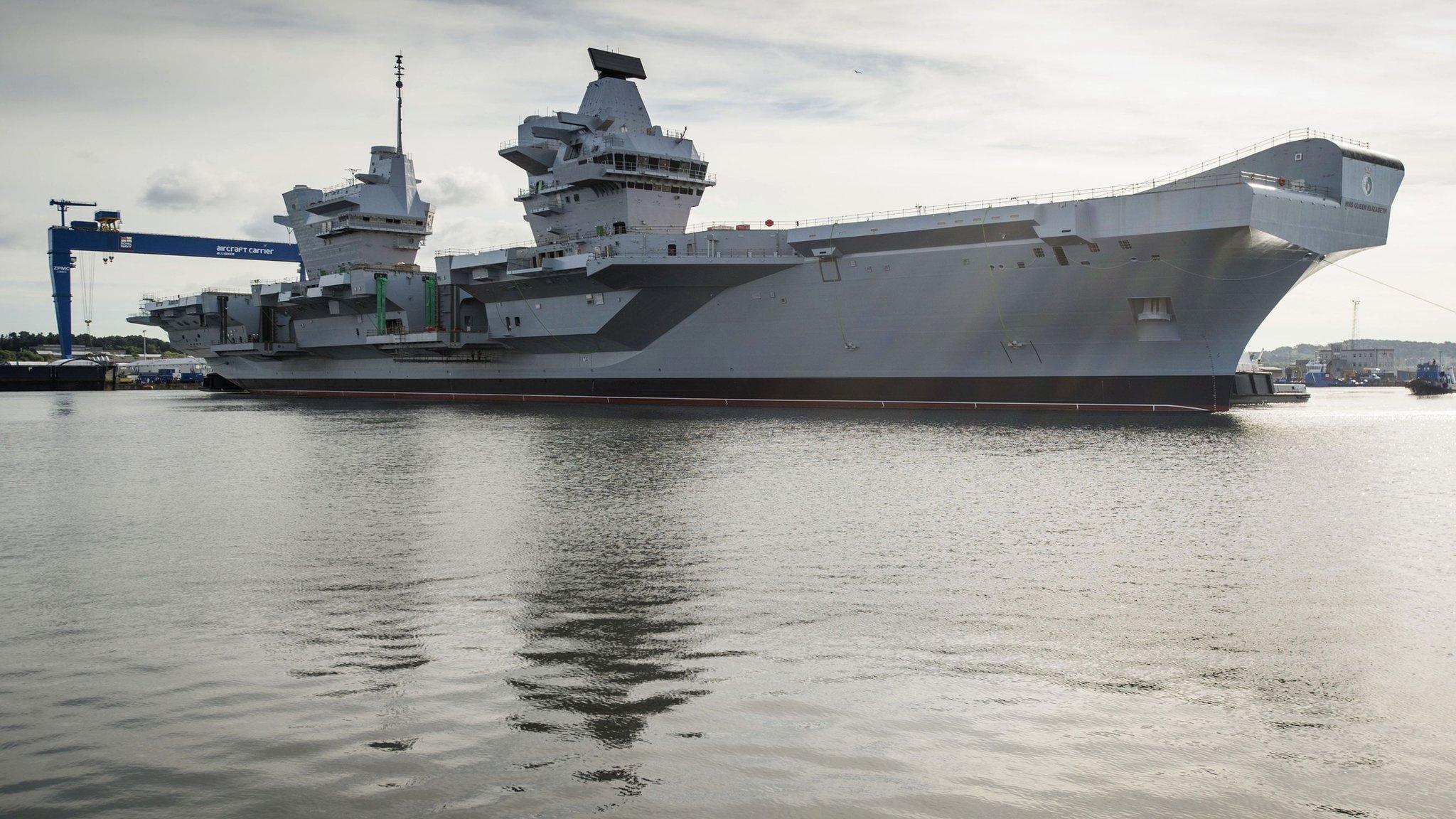HMS Queen Elizabeth: Leak found on new aircraft carrier
- Published
- comments
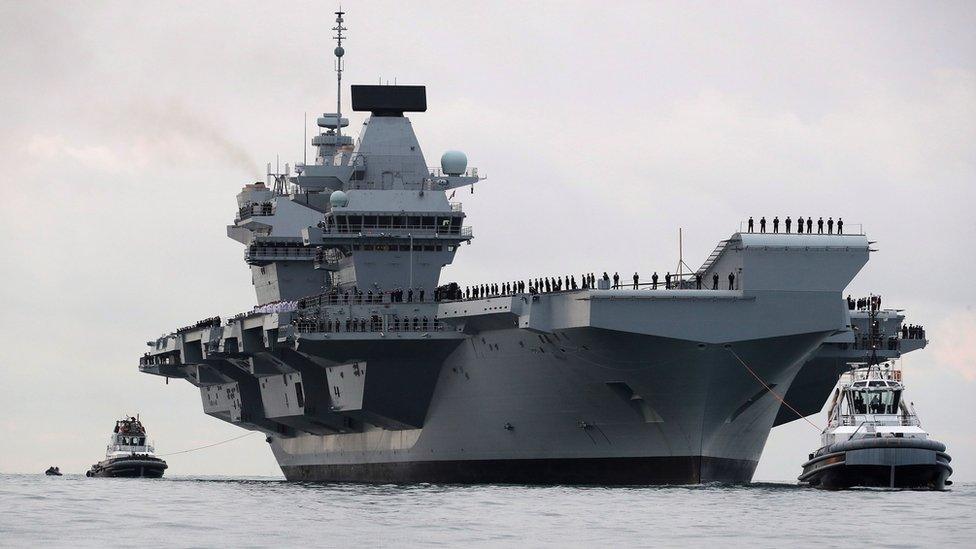
HMS Queen Elizabeth sailed into Portsmouth in August following preparations at the naval base
The UK's new aircraft carrier, HMS Queen Elizabeth, is leaking because of a faulty seal.
The Royal Navy's future flagship, which was commissioned by the Queen earlier this month in Portsmouth, has a problem with one of its propeller shafts.
The fault on the £3.1bn carrier was first identified during sea trials.
A Royal Navy spokesman said the ship was scheduled for repair and the fault did not prevent it from sailing again early in the new year.
According to the Sun newspaper, HMS Queen Elizabeth has been taking on up to 200 litres of sea water every hour, external because of the fault.
BBC defence correspondent Jonathan Beale said the problem was "highly embarrassing" for the Royal Navy and just one of a number of snags still to be rectified.
A Royal Navy spokesman said "an issue" with a shaft seal had been identified during HMS Queen Elizabeth's sea trial and a repair was scheduled for when the carrier was in Portsmouth.
He added: "It does not prevent her from sailing again and her sea trials programme will not be affected."

Analysis
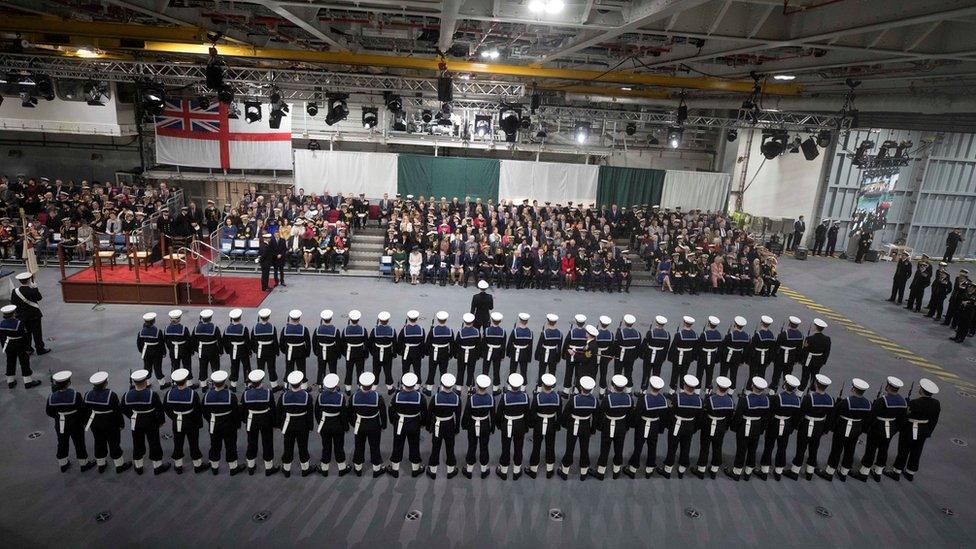
The commissioning ceremony took place on 7 December
By Jonathan Beale, BBC defence correspondent
The Royal Navy is trying to play down the problem, after first trying to hide it.
It is clearly embarrassing.
They have known about the problem for some time but they did not want it to get in the way of the commissioning ceremony in front of the Queen.
The truth is similar leaks in other warships are not unusual and can be fixed relatively easily.
The difference this time though is the scale of HMS Queen Elizabeth and the fact it has just been handed over to the navy.
The big question is whether the leak can be fixed while it is still in the water.
The navy insists the job can be done without her going back to dry dock, which would be costly and add to delays.
Either way, the navy insists the fault will have to be rectified and paid for by the contractors, along with a list of other "snags".

Defence Secretary Gavin Williamson said the cost of the repair would be funded by the contractors that built it.
He added: "This is the reason why we have the sea trials, to make sure that everything is working absolutely perfectly. This is something that work is currently ongoing to deal with."
'Expect to take on water'
HMS Queen Elizabeth was built by the Aircraft Carrier Alliance, a grouping of BAE Systems, Babcock and Thales.
Blocks were completed at six yards - Govan and Scotstoun in Glasgow, Appledore, Cammell Laird in Liverpool, A&P in Newcastle and Portsmouth - before being assembled at Rosyth Dockyard in Fife.
BAE Systems, which confirmed the affected section was built at its site in Govan, said the repair would be done in the new year and take a few days.
The company said: "It is normal practice for a volume of work and defect resolution to continue following vessel acceptance. This will be completed prior to the nation's flagship recommencing her programme at sea in 2018."

The maximum amount of water the carrier is said to be taking on every hour is 200 litres - the capacity of fish tank measuring 100cm x 50cm x 40cm.
Rear Admiral Chris Parry, a former director of operational capability at the Ministry of Defence, said the headlines were "very embarrassing" but the leak "in reality is no big deal".
"You expect to take some water in when you're operating a warship at sea," he told the BBC, adding that was why they are equipped with pumps.
He said: "It's been out for sea trials, it's been under pressure. They've been testing all their systems to the extremes and I'm afraid to say this is what happens at sea."
The 900ft (280m) long HMS Queen Elizabeth entered its home port of Portsmouth for the first time in August after starting two months of sea trials from Rosyth.
It is the first of the UK's new generation of aircraft carriers.
A second carrier, HMS Prince of Wales, is externally complete but it will take 18 months to fit its internal systems at Rosyth and it will be 2019 before the ship can begin sea trials.
No planes
News of the leak comes after MPs raised concerns over the costs of the F-35 jet aircraft that will fly off HMS Queen Elizabeth.
HMS Queen Elizabeth takes to the sea
The UK has begun a £9.1bn programme to buy 48 of the F-35s by 2025 from US giant Lockheed Martin.
But the Commons defence select committee said there had been an "unacceptable lack of transparency" over the jets, external, with one estimate suggesting each plane would cost more than £150m.
You might also like
HMS Queen Elizabeth cannot currently deploy planes but the Lightning fighter jets are due to make their first trial flights from the carrier's deck next year, with 120 air crew being trained in the US.
A new national shipbuilding strategy was unveiled by then Defence Secretary Sir Michael Fallon in September.
The government has said it plans to buy at least five new Type 31e frigates by 2023, and share the work between shipyards across the country.
The first batch of new ships will bolster the Royal Navy fleet, but it is hoped foreign navies will buy ships from the UK in future.
- Published7 December 2017
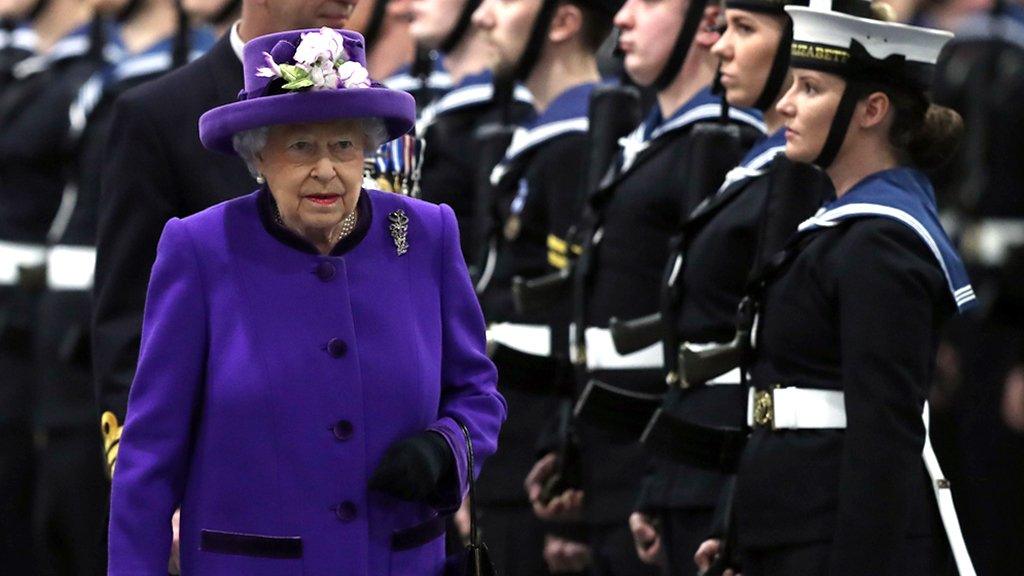
- Published16 August 2017

- Published26 June 2017

- Published5 October 2017
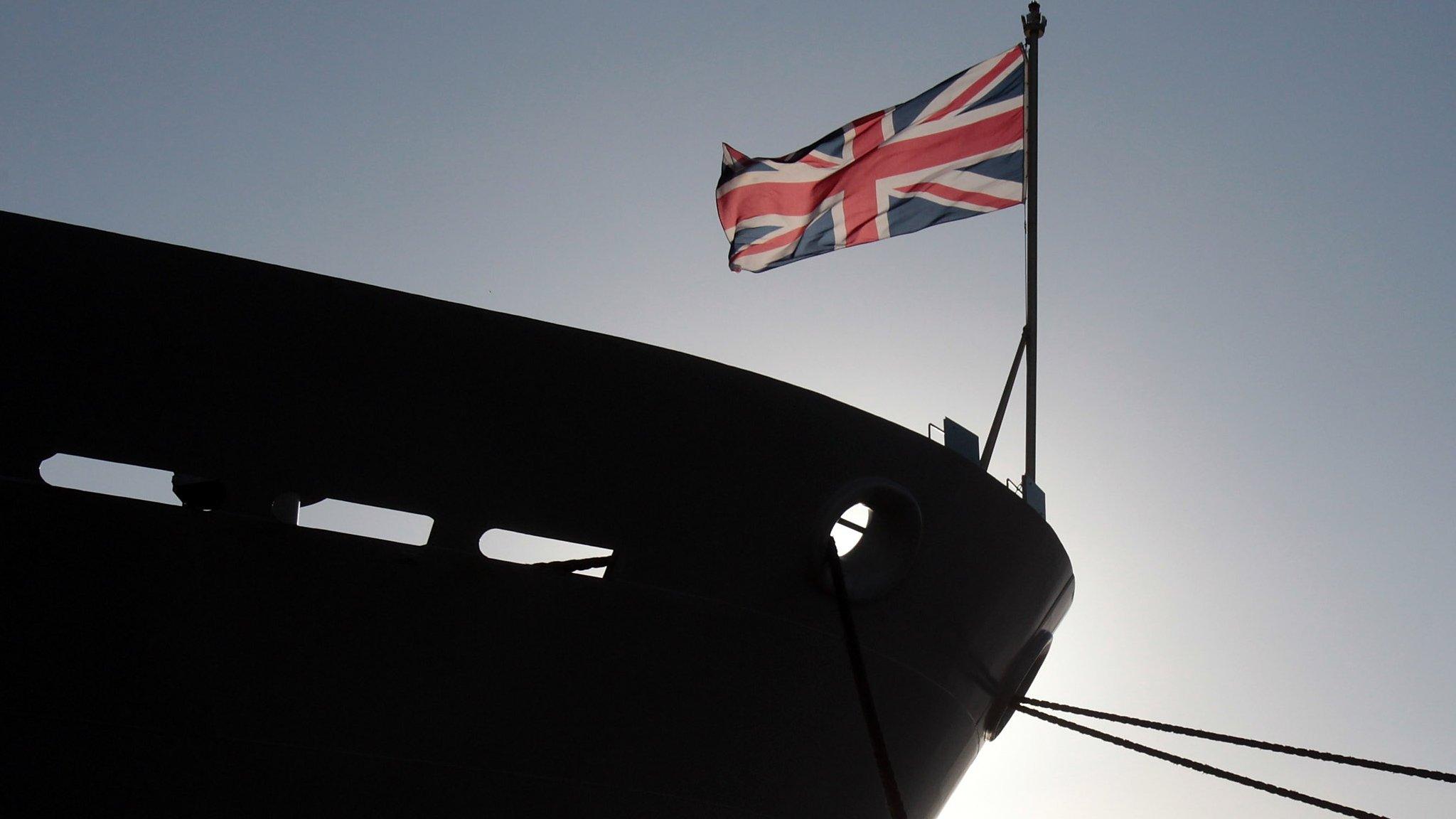
- Published1 November 2017

- Published17 December 2017
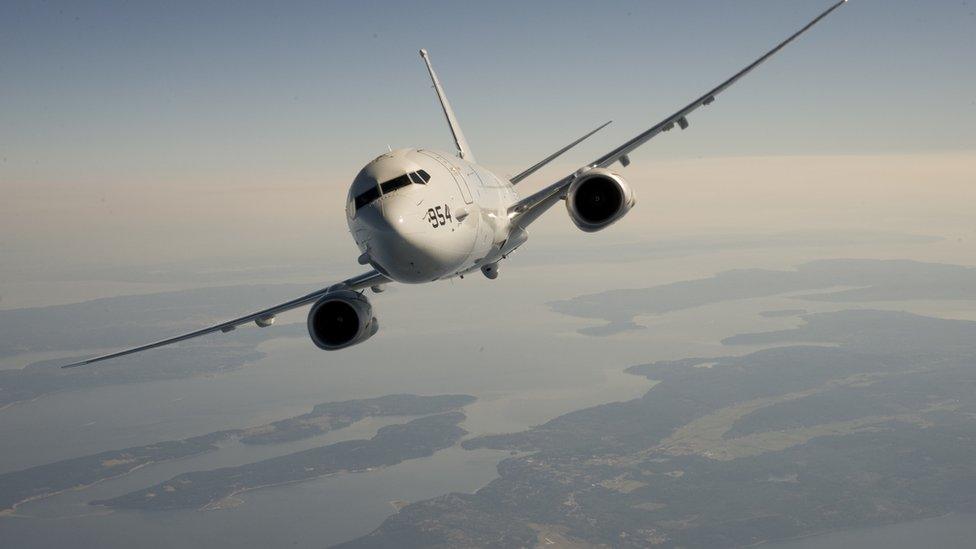
- Published16 March 2017
